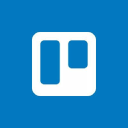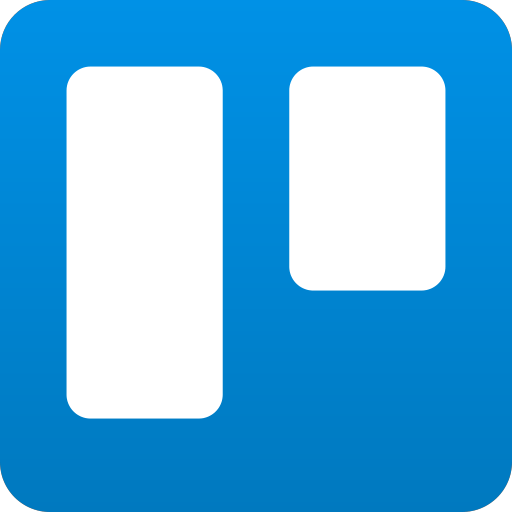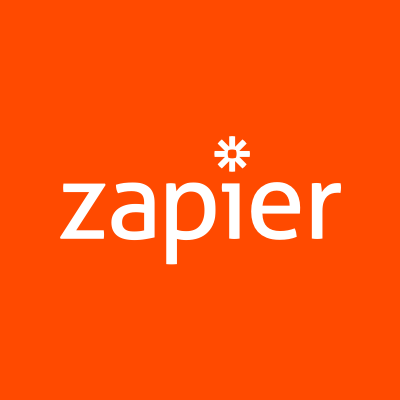Quitting My Cushy SDE Job To Build A Screenshot API [$2.2K MRR]
Hello! Who are you and what business did you start?🔗
I am Dmytro Krasun, the founder behind ScreenshotOne—a simple API to turn any website URL into a screenshot.
People are often surprised that you can build a business out of automating screenshotting websites. But look who are my customers.
Owners of website galleries, copyright infringement software, cold email software, marketing software, and any other application that needs to render website screenshots. If you want to show screenshots of any website in your application, you know where to find me.
I have only started but already managed to grow my "little" software project to $2.2K MRR.

What's your backstory and how did you come up with the idea?🔗
Before I started my current business, I was a pretty happy server-side developer for around 10 years with a decent salary. I wrote code for 15 years in total at that moment. And I wasn't burnt out. But!
I always had side projects and wanted to try myself as an entrepreneur. But it was hard to launch anything while I worked. I always was completely (200%) focused on my daily job—it was always a priority. And that's probably why I grew fast and made decent money.
An opportunity arose almost "accidentally". A new baby was born in our family and instead of taking a paternity leave on a new job I just found, I thought it might be a good time to spend time growing a baby and building and launching a project. It was a tough decision. Because the people and the product in the new job were superb.
Eventually, I decided to jump into the unknown without any plans. Probably, because I just was crazy and it "felt" like an interesting adventure.
I had a runaway for 2 years, but I didn't know what to do. And I was nobody. So, I went straight to X (Twitter) to "build an audience." That was my initial goal. What a joke, yes? I was thinking that I could figure out later what to build. By the way, don't do that!
Then I built my first product that could be interesting for the audience—it was a simple Twitter analytics tool. A few people used it. But I wasn't passionate about it.
I decided to get back to my roots. I was a server-side developer and had a tremendous experience in building APIs. I sat and wrote down all the problems I encountered, and generated new ones. Everything looked boring to me, but I didn't want to be stuck for years in search of ideas. So, I picked up one randomly—screenshot API. I decided that I could validate it on the go and see if there was demand.
Then I started to build it. A bit later, I googled, and there were a lot of competitors and good ones. I was disappointed at first. But then I realized—it meant that the market was validated and I just needed to build the best product in the niche.
That's what I have been doing till these days.
Take us through the process of building the first version of your product.🔗
I bought a domain on January 5, 2022, spun up a simple website, and started to write content related to my future product. Look at my first ugly version of the landing page:

But I needed to start with something. And that was it. I wrote a lot of content these days and it was indexing while I was building a product. I was an SEO newbie and I didn't know about keyword research and competition analysis. So what did I write?
I wrote about any problem I encountered while building my product and how it can be solved by using my product much faster and cheaper as an alternative.
For, example, my screenshot API allows you to hide ads and cookies banners when rendering screenshots, so I wrote how you can do it yourself for free and proposed my product as an alternative. It turned out to be pretty much a working approach for driving conversions.
The SEO-first approach helped me later, when I launched, after five months, I already had traffic I could use to monetize the product.
It took me 5 months to build and launch the product. But 2 of them, mostly, I didn't work due to private reasons. I didn't register the company officially, till I started to receive the first payments.
It was a tough time. I defined a set of features I wanted to add to my product—most of them, were just ideas on what could be great to have. Yes, don't laugh at me, please.
I started to build a dashboard app where potential customers could try the product, see usage history, upgrade plans, and configure notifications. It was pure HTML, CSS, and JavaScript rendered by Go. I was a server-side developer and didn't know how to use modern JavaScript frameworks. By the way, today, I am rewriting my dashboard app to Next.js.
The first version of the product I hosted on a Digital Ocean droplet, then when I started to grow, I moved to Render, then I needed more scale and moved to Google Cloud Platform with autoscaling. A week ago, I spun up a new Kubernetes cluster to reduce my cost usage on Google Clould Platform and it already works well.
Look, If I started again, I would try to launch much earlier and with a different approach. I would build only one core feature and the feature that works pretty well. Then I would find people who might be interested in it and try to sell it to them.
Put your ambitions aside for a while, and try to make the first dollar online by selling a course, a MicroSaaS, or a simple app.
Describe the process of launching the business.🔗
When the first version of my product was ready, it was at the end of May 2022, I already had some relevant traffic from Google, since I was creating content before the launch. But it wasn't enough to make any sales. It was actually—zero. So, all next month—June, I spent on marketing. It was paid ads, writing on Reddit, Indie Hackers, forums, directories, and Twitter. I barely slept.
Eventually, I summarized everything I did in my first marketing month on Indie Hackers. It was the top post of the month and it went viral.
I was almost ready to give up and was tired. And eventually, on July 4, 2022, I had my first paying customer. And I will never forget that. My friend on Twitter, Jannis was building a directory of tools for creators and wanted to automate screenshotting of tools—it was just in time sale.
Then I got my second customer from Google paid ads... And then I doubled down on SEO. Everything else is history.
If I started today again, I wouldn't start from SEO. I would quickly build a prototype with a payment link and would try to show it to potentially interested people. SEO is a long-term game and it takes to work.
Since launch, what has worked to attract and retain customers?🔗
There is no silver bullet according to my current understanding of marketing. You need to find 2-3 channels you can constantly get customers from. And there is no other way to do it than to experiment and see what works.
For me, SEO, Google Ads, and Twitter worked well. But I tested Reddit, Indie Hackers, Twitter Ads, directories, LinkedIn, and other platforms. They all work, but the question which of them you can repeatedly extract customers from?
I shared my simple SEO strategy with all the details on Indie Hackers—I basically quickly create content, get some traffic, analyze it and update the content. That's it.
For X (Twitter), in the early days, I aggressively promoted my product and mentioned it everywhere. But it felt awkward, so I stopped doing that. And focused on helping people—just solving their problems, supporting them, answering their questions, connecting people. And people became aware of me, of what I do, and how they can find me. It is not rare now—to see others recommending my product now without my participation.

I am super grateful to be part of the makers community. And I constantly pay back by promoting others.
But attracting customers is not enough, you need to retain them. In my case, I immediately answer support tickets and try to solve the problems of all my customers. I don't differentiate between paid plans. I refund if asked. I solve any minor and major issues they encounter. And it helps me tremendously.
Often they leave great testimonials back or even upgrade to higher paid plans as a respect for my job or thanks.
I don't believe there is a shortcut to that. You must excel at your customer success with your business—understand their needs and solve them perfectly.
How are you doing today and what does the future look like?🔗
I am really lucky and happy with what I have today. I am profitable as a business and we can cover our family expenses. But it all doesn't come only from ScreenshotOne. I also perform consulting and write code for others in exchange for money.
Today, ScreenshotOne makes $2500/mo on average with ~85 customers. And I spent $600-800 on servers. Optimizing server costs is my highest priority now. LTV is around $500.

My main source of traffic is Twitter (X) and Google. I have 10K followers on Twitter and it helps to promote my products—I won't lie. And I worked harshly on SEO and now it pays off. My product is in the top 5 positions for the most competitive keywords in my niche, like "screenshot API" and similar.

Daily, I am improving the UX/UI of the product, answering support questions, and working on marketing—enough to fill my days with work full-time.
I see how I can grow the product to $10K MRR by changing positioning and niching down on just a few segments of customers instead of trying to serve everybody. I am working on that right now.
Through starting the business, have you learned anything particularly helpful or advantageous?🔗
When I started to work on my product, I wrote a lot of content for SEO, which helped me at later stages to grow. It turned out that most of my competitors didn't work on SEO, so I quickly picked up one of the top positions in Google for the most competitive keywords in my niche.
Another thing that boosted my growth was the Product Hunt launch. I made it to the top. It helped both in terms of awareness and sales. Product Hunt gives you a good backlink that is trusted by Google, so my SEO rankings were boosted, too. I should have launched earlier, but I didn't know that.
An unexpected source of customers is also Twitter (X), when you participate in communities relevant to your product, people will notice you and might remember. So, when the time comes, they can use your product or recommend you—it happened to me a few times.
Once you have first paying customers, not free users, but people who use your product for their business and pay you for that. They must be your only source of important feedback.
I believe that you must dive as deep as you can into their business, understand their language, and understand how you can help them. It is also often an opportunity to upsell new products or more features.
Without a deep understanding of your customers, building great is impossible. You have zero chance to prove to me the opposite is true—building a great product without understanding customers is possible.
No matter what, try everything and find what works best for you.
What platform/tools do you use for your business?🔗
I don't use many tools and I do it on purpose, but I can mention a few:
Google Sheets. Once a month, I put all my metrics into a spreadsheet manually and analyze them. I could automate that, but I do it so on purpose to have dedicated time for thinking. My payment notifications are disabled to not distract me, too, daily.
Pirsch Analytics. It is a simple website analytics tool that just works. I don't want to complicate my analytics and they do a great job—never fails and always delivers.
Crisp IM. I use a paid version of Crisp IM for support. They allow me to chat with my customers from my phone, email, or desktop. They also have calls and a lot of plugins that can simplify your support job.
Apple Notes and Trello. I use Apple Notes for freestyle planning and Trello boards for organized to-do lists.
Don't overcomplicate—customer satisfaction of your service matters more than the tools you use.
What have been the most influential books, podcasts, or other resources?🔗
I think it was discovering the Indie Hackers podcast for me and realizing that everything is possible even for a simple human being like me without any extra background in business, but by just starting small and building one step at a time.
Of course, I read almost all popular books on business and biographies of great people. It was indeed inspiring, but they were too far from me. I didn't understand how I could apply what I read in my life.
But the Indie Hackers podcast where folks like me talked and shared their successes and failures—made me think that I can give it a try, too.
Advice for other entrepreneurs who want to get started or are just starting out?🔗
Giving advice is one of the hardest things to do for me—everything is questionable and should be considered within the context. But I can write about the past version of myself.
Put your ambitions aside for a while, and try to make the first dollar online by selling a course, a MicroSaaS, or a simple app. Once made, try to make ten dollars, and then one hundred. Repeat till you are sure that building a business is really what you want and you like what happens, no matter how hard it turns out to be.
Once you realize that it is what you like to do—don't quit. If you have made $1, $10, then $100 and you don't quit, then everything is possible and only skies will be the limit for you.
And don't listen to any advice including mine. Only you decide, if you eventually decide to go back to a regular job—do it. It is your life, you live it only once and you are responsible for making sure you are happy at least for a while.
Are you looking to hire for certain positions right now?🔗
I am not looking to hire actively, right now, but once my MRR crosses a specific threshold and I feel I can cover that, I will be open to inviting more people into my journey.
Check out my X profile for the latest updates on my business.
Where can we go to learn more?🔗
If you have any questions or comments, drop a comment below!

Download the report and join our email newsletter packed with business ideas and money-making opportunities, backed by real-life case studies.

Download the report and join our email newsletter packed with business ideas and money-making opportunities, backed by real-life case studies.

Download the report and join our email newsletter packed with business ideas and money-making opportunities, backed by real-life case studies.

Download the report and join our email newsletter packed with business ideas and money-making opportunities, backed by real-life case studies.

Download the report and join our email newsletter packed with business ideas and money-making opportunities, backed by real-life case studies.

Download the report and join our email newsletter packed with business ideas and money-making opportunities, backed by real-life case studies.

Download the report and join our email newsletter packed with business ideas and money-making opportunities, backed by real-life case studies.

Download the report and join our email newsletter packed with business ideas and money-making opportunities, backed by real-life case studies.















